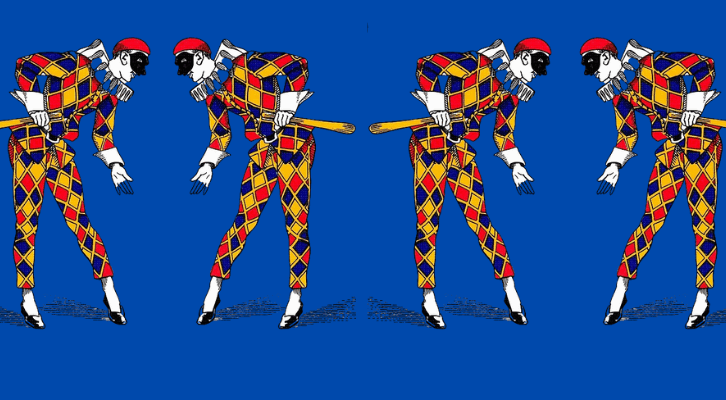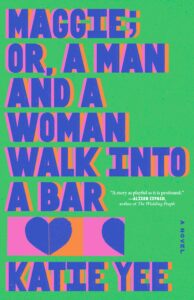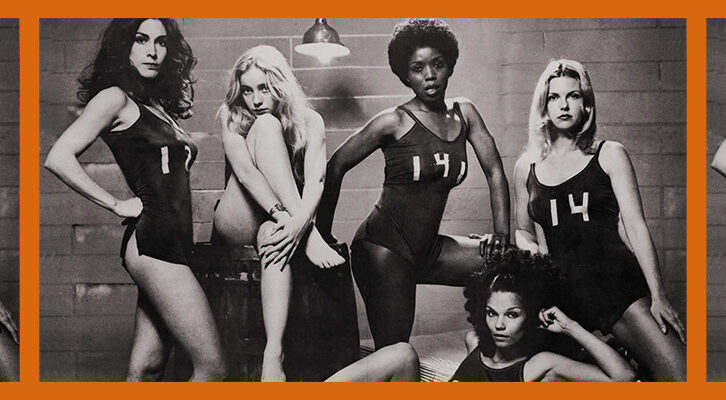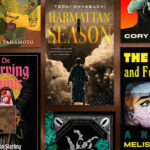
Katie Yee on the Writing Lessons of a Great Prank
“Both pranking and writing are exercises in careful observation.”
This first appeared in Lit Hub’s Craft of Writing newsletter—sign up here.
Pranks get a bad rap. At their worst, they can function as a kind of punishment for people foolish enough to trust you. (HaHA! Bet you didn’t think I would give you an electric shock pen, you dummy!) But hear me out: When they’re done right, at their very best, pranks are a labor of love. The best pranks are personal. They have a clear target, and they lovingly mock that target in a really specific way.
A few years ago, I worked at this very website. (Honey, I’m home!) Before the pandemic, Lit Hub had an office on the border of Greenwich Village, where we would sit in a comically small room, surrounded by teetering piles of books. The fact that we were in-person five days a week, packed into that room like sardines, meant that we got to know our coworkers quite well—slowly, in eight-hour windows and little glimpses. Office life gave us the kind of intimacy that comes with close and frequent proximity.
Likes; dislikes; allergies and pet peeves; thinking faces; favorite catch-phrases; their penchant toward lateness; how often their kids or dogs got sick; if they were expecting a special package at home and had to leave early to greet the mail; whether they were the kind of person that clicks a pen or bounces their leg when they’re nervous; how many cups of coffee they drank in the morning, and, relatedly, how often they got up to go to the bathroom during the course of the workday.
For instance, I knew that my boss, Dan, loved soccer and his wife. I knew that he “quit” smoking and drank his coffee black. I knew that he got up around 1pm every day to go to the Original Sandwich Shoppe, where he got a turkey sandwich with cheddar, green apple, lettuce, tomatoes, and their special herbed mayo. I also knew that he had a pretty bad memory. One day, I thought it would be funny to get an identical sandwich and put it on a white plate from the kitchen—same as he did every day. I would wait for him to finish his lunch and get up from his desk, leave the second sandwich, and see what happened. He was temporarily bamboozled. He was a good sport. We all laughed a little.
When I struggle with plot (which I often do) or when I’m conjuring a new prank (which I also often do) I think about routine: the shape of a character’s day and the things that might fit inside it.
It was a small prank, costing me under $10 (oh, pre-pandemic pricing!), and offering a little jolt of joy in the day. And, okay, one more: The time I convinced him he somehow accidentally plagiarized the first page of Fleur Jaeggy’s Sweet Days of Discipline, despite him not having ever read it; this prank required only a little time typesetting, printing, and an X-ACTO knife. If you want to see a look of pure, baffled panic on a writer’s face, this prank is the one. Why am I telling you all this? Did I pitch this essay just to recount pranks I’ve pulled on Dan at the old Lit Hub office?
Maybe. But I’m also saying all this because I think good pranking and good writing have a lot in common. The feeling of reading a really good piece of fiction often feels to me like a prank being pulled off well: the control, the surprise, the delight, the laughter, the feeling of play. The relationship between the prankster and their audience is not unlike that of the writer and the reader. There’s got to be the feeling that you’re in on the spectacle together, that you’re not going to turn around and pull a fast one on them or do something senselessly cruel, that wink of trust between you.
This isn’t to say that other people—the object of the prank, the characters in the story—are pawns for entertainment. The way you say, “Gotcha!” when you’ve pulled off a prank, like a trap, but also like: I got you. To apprehend and to understand. Both pranking and writing are exercises in careful observation. They are both ways of dedicating your curiosity to something—usually something seemingly insignificant.
Often, in writing workshops, teachers will talk of character development in terms of wants. We have to know what the characters desire at all times, in every scene. What if the character just wants a turkey sandwich? What if it’s equally important to know if they pay cash or card, if they’re a good tipper, which street they walk down, whether they smile at dogs when they pass them on the sidewalk? Which finger they use to press the elevator button on their way back up? Sometimes, it’s the seemingly superfluous details that make a character feel really lived in.
I’m thinking of the beginning of Solvej Balle’s On the Calculation of Volume (tr. Barbara Haveland), an enchanting story about a woman who gets trapped inside the eighteenth of November. In a Groundhog Day-like situation, she lives this day again and again. On the first page, there’s a bit that reads:
The sound of metal on metal when he sets the kettle on the stove and the very faint click when he turns on the gas. Then there’s a pause until the water comes to a boil. There’s the rustle of tea leaves and paper as first one, then another spoonful of tea leaves is taken from a paper bag and poured into the teapot, then the sound of water being poured over the tea leaves, but such sounds can only be heard in the kitchen. I can hear the fridge being opened, because the door bumps against a corner of the countertop.
This is her husband. And, to be fair, she’s been living this same morning for 121 days at this point, but still. The intimacy in the routine tells us everything we need to know. Who among us could not play this game with those whose orbit circles closest to our own? Could you list the first day sounds of your love? Could you do the same for your main character?
These were questions I was asking myself when the first scene in my novel was born. It starts with a bedtime ritual. It starts with a small noticing, a snag of attention, indicative of something that will quickly unravel the narrator’s life.
When I struggle with plot (which I often do) or when I’m conjuring a new prank (which I also often do) I think about routine: the shape of a character’s day and the things that might fit inside it.
I’ve often found that people are predictable. This isn’t a bad thing! Rather, the predictability is what makes shenanigans possible. It’s the groundwork on which we can play. Pranks are, in a way, a love letter to routine—a display of how well and wholly you understand someone—and a disruption to that routine all in one. And what is writing plot if not the same thing? A careful dissection of someone’s daily steps, and deciding the moment when things happen.
The best pranksters are storytellers. They want to delight. They plan, they plot. They have an inkling of what might happen, but the end results are usually a surprise even to them. They build the structure of the thing, but it takes everyone—the prankee, the audience, the characters, the reader—to make the room roar, to make it all come to life.
______________________________________________

Maggie; or, A Man and a Woman Walk Into a Bar by Katie Yee is available via S&S/Summit Books.
Katie Yee
Katie Yee is a Brooklyn-based writer.



















